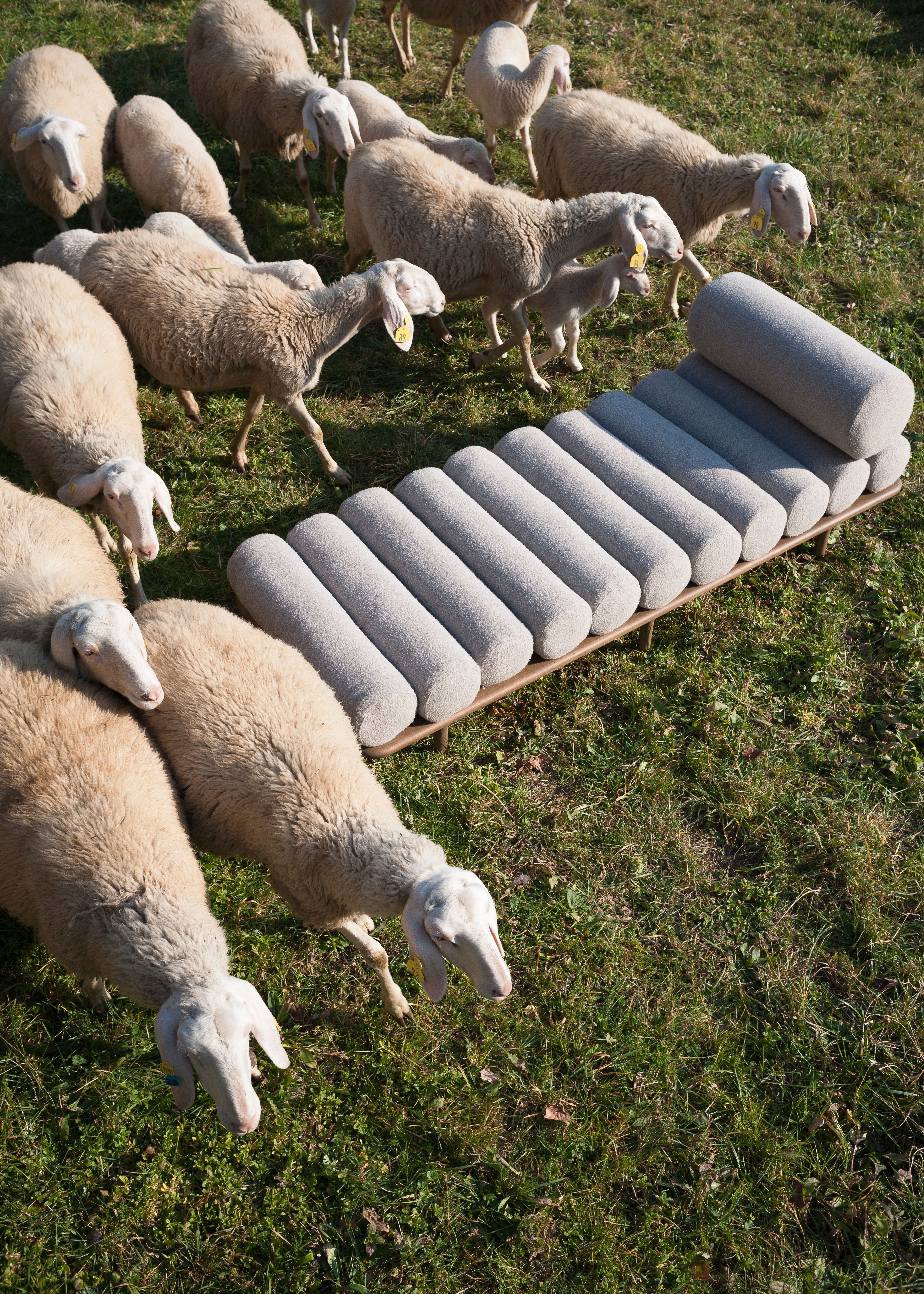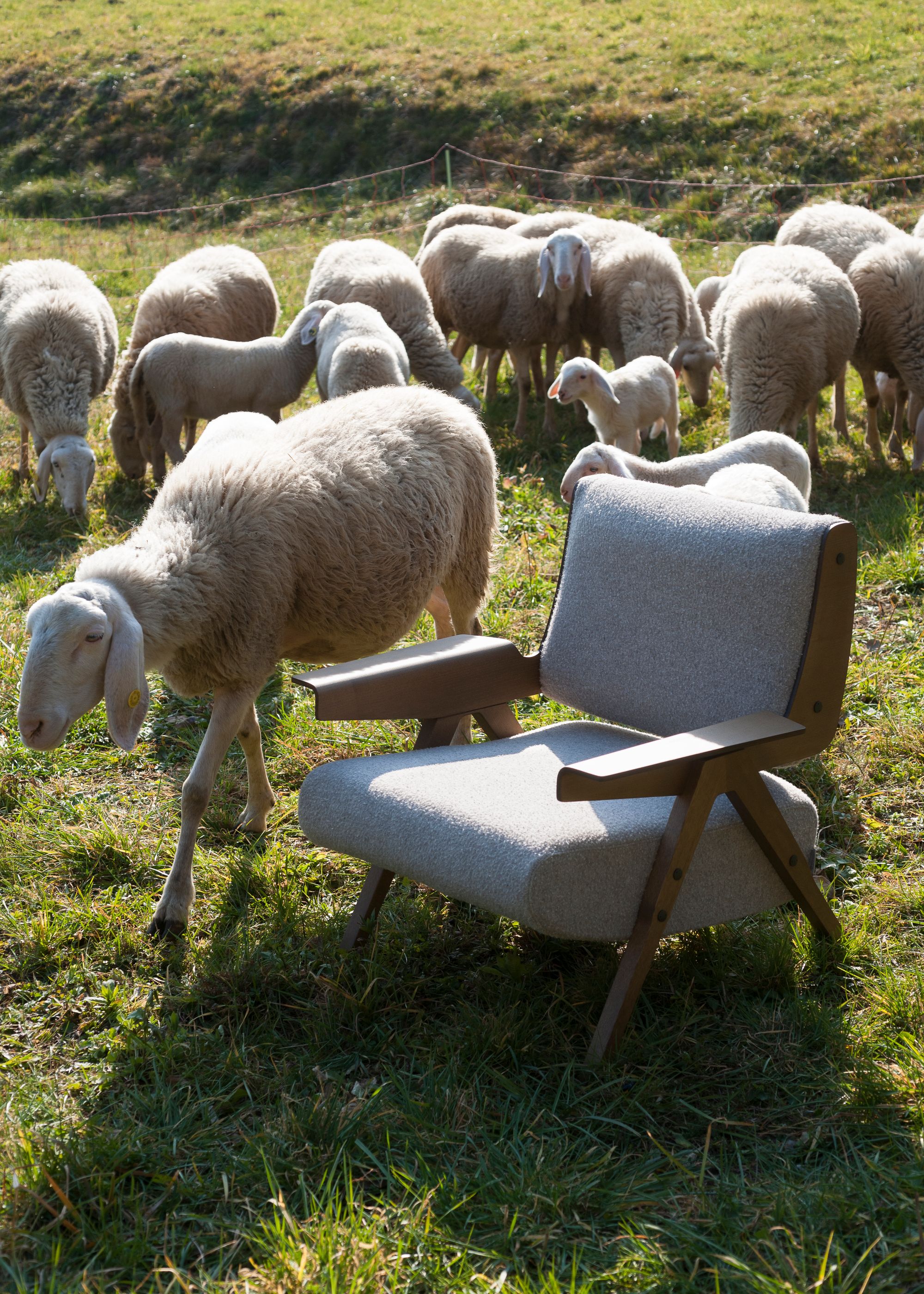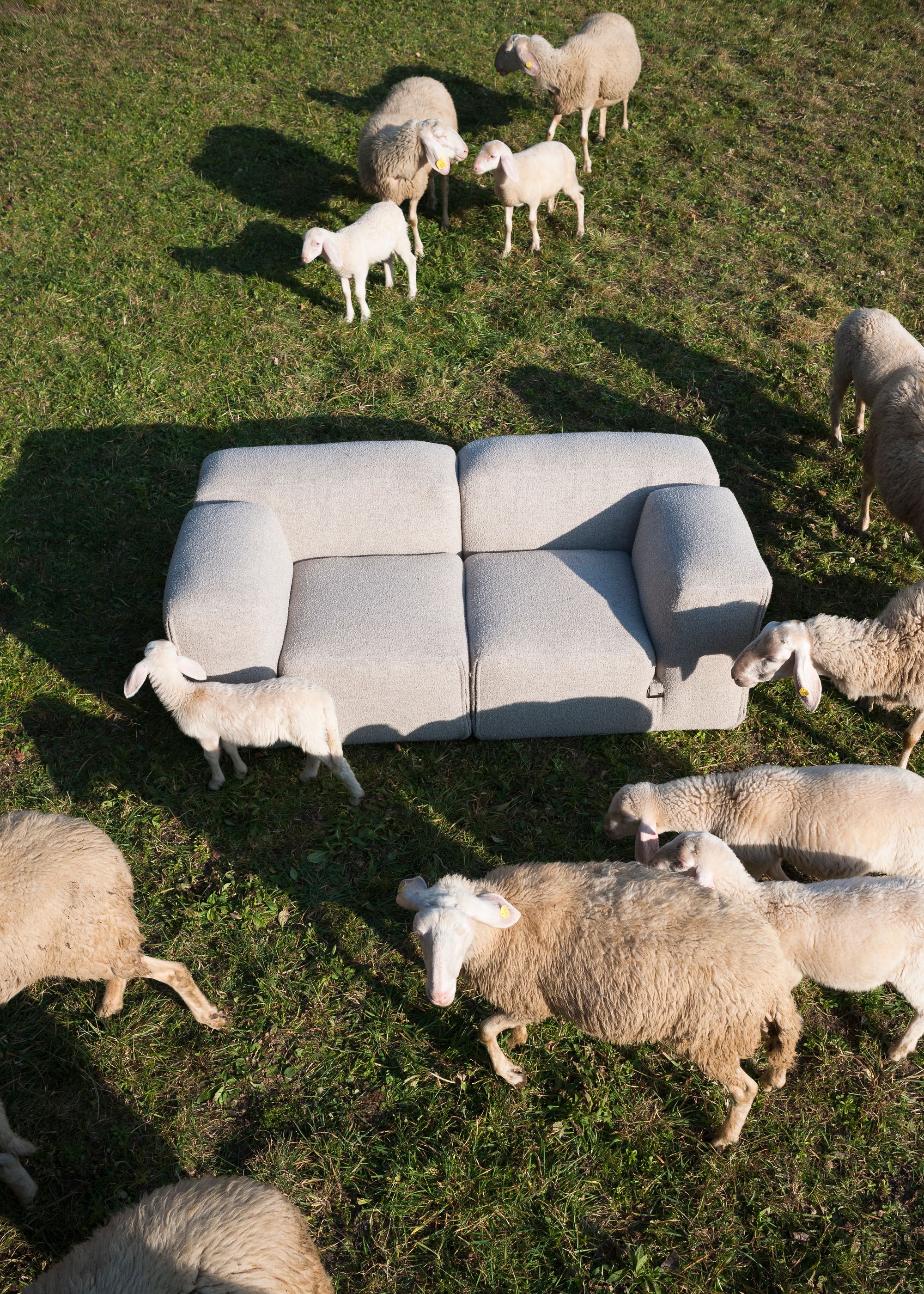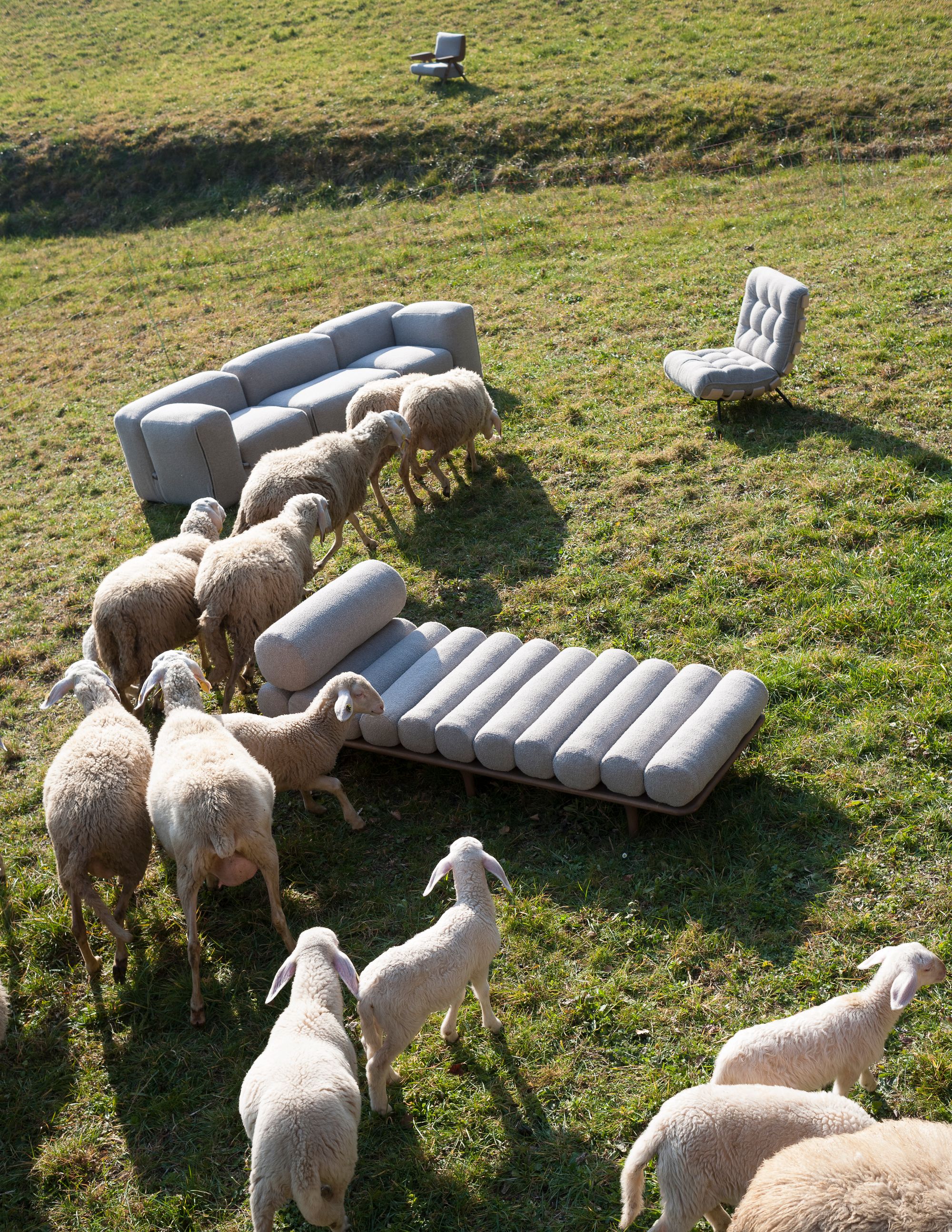
Tacchini seeks to create products with a natural solution that support small producers. Photography by Andrea Ferrari for Tacchini.

Studiopepe, FLOCK Five to Nine daybed, 2020/2023; reupholstered with ecologically sustainable wool. Curated by Formafantasma. Available through Tacchini. Photography by Andrea Ferrari for Tacchini.
When designers Andrea Trimarchi and Simone Farresin — aka Formafantasma — moved to Milan in 2021, few could have predicted the conceptual influence they would wield over the European furniture capital. During the ten years prior, the Italian-born duo lived and worked in the Netherlands (where they attended Design Academy Eindhoven together), making a name for themselves internationally with their research-based approach, from which has emerged both design objects and exhibitions, such as the Serpentine's Cambio, a study of the global timber industry.

Tacchini seeks to create products with a natural solution that support small producers. Photography by Andrea Ferrari for Tacchini.

Martin Eisler, FLOCK Costela armchair, 1952/2023; reupholstered with ecologically sustainable wool. Curated by Formafantasma. Available through Tacchini. Photography by Andrea Ferrari for Tacchini.

Gianfranco Frattini, FLOCK LINA armchair, 2021; reupholstered with ecologically sustainable wool. Curated by Formafantasma. Available through Tacchini.

Photography by Andrea Ferrari for Tacchini.
Since returning to Italy, Trimarchi and Farresin have persuaded many brands to adopt their environmentally engaged modus operandi. And it doesn't always involve designing new objects. “All the possible furniture shapes already exist,” proclaims Giusi Tacchini, whose eponymous family company is one of half a dozen design brands Formafantasma are working with this year. “So instead of showing new forms, we thought it was more important to reconsider production. Andrea and Simone taught me how to think about the lifecycle of a product.”
The knowledge for the project came out of the research Formafantasma undertook for their 2023 exhibition Oltre Terra. Why Wool Matters at the National Museum of Oslo. For the presentation at Capsule Plaza during Milan's annual Design Week, Formafantasma sprayed the natural-colored sofas with fluorescent stripes like those farmers use to identify their sheep. Giusi Tacchini is confident the brand's customers will recognize the value in the new production method, as do the sheep farmers themselves. “They have seen the product and are very proud of it.”

Mario Bellini, FLOCK Le Mura sofa, 1972/2023; reupholstered with ecologically sustainable wool. Curated by Formafantasma. Available through Tacchini. Photography by Andrea Ferrari for Tacchini.

Studiopepe, FLOCK Five to Nine daybed, 2020/2023; reupholstered with ecologically sustainable wool. Curated by Formafantasma. Available through Tacchini. Photography by Andrea Ferrari for Tacchini.
The product in question is the sofa, and Tacchini's catalogue includes some of the most important designs of the 20th and 21st centuries, which until now were manufactured in the conventional way using industrially produced chemical foam. To create more sustainable versions, Formafantasma looked to pre-industrial mattress-making techniques, which employ natural latex and wool stuffing. “It's a totally new production process,” boasts Tacchini of the pieces made with non-polluting surplus wool from Brianzola sheep raised near the company's headquarters, 45 minutes north of Milan. “It's a regional way of working — making modern pieces with an artisanal process that is entirely sustainable,” she continues, adding that existing models with the new upholstery will cost only five percent more than their petro-produced predecessors.